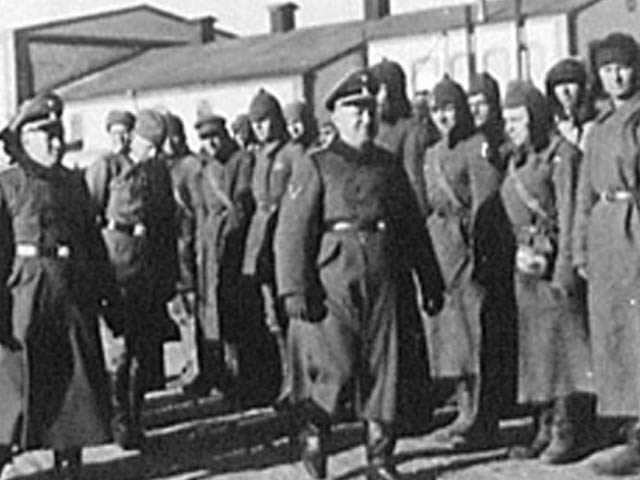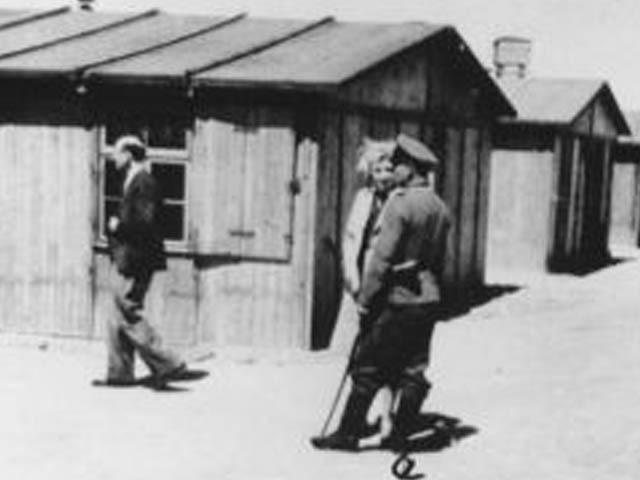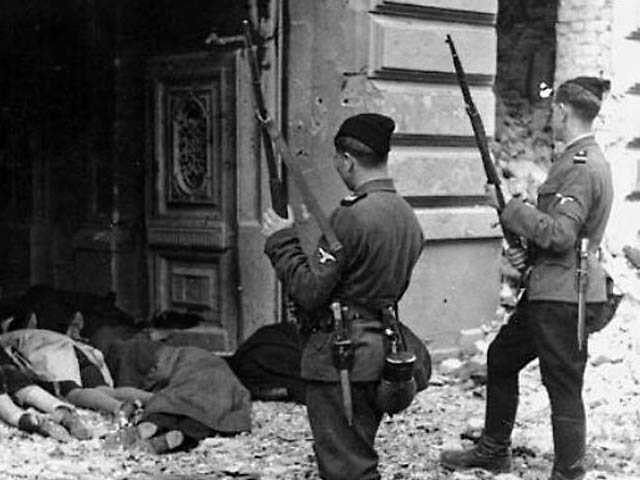SS Wachmannschaften torturers from the East - part 2
The SS-Wachmannschaften, informally called Trawnikimänner, in addition to their service as part of Operation Reinhard, also took part in the liquidation of ghettos and mass executions, and also served in concentration and labor camps.
The extermination of Jews in the occupied territories of Poland by SS-Wachmannschaften units had already begun in Trawniki. A ghetto to which Jews from other camps were deported was located near the training camp. The process took place as allegedly the Jews were needed as workforce. In reality, they were shot during "practical training". Troops who completed the training had to personally kill at least one person, most often of Jewish origin. It is estimated that more than 5000 watchmen were trained in Trawniki alone. Therefore, it can be estimated that the number of victims in Trawniki alone was about 5000.
The first combat experience of "Trawnikimänner" took place on the night of 16-17 March 1942, together with the first deportations from the ghettos in Lublin and Lviv to the death camp in Bełżec. SS-Wachmannschaften participated in the expulsion and gathering of residents for transport, as well as in the execution of refugees and sick or disabled people. Already then, the watchmen showed extreme brutality.
The SS-Wachmannschaften later participated in virtually every major deportation operation, first in the Lublin district, then in the other districts of the General Government. They also took part in the liquidation of ghettos in Warsaw, Częstochowa and Białystok.
Survivors' accounts show that the guards were frequently under the influence of alcohol; they showed extreme cruelty and corruption. Torture and murder were indispensable elements of deportation, without sparing women and children. Trawnikimänner often raped Jewish women and girls.
At Globocnik's order, labor camps were established in the Lublin district: in Budzyń, Dorohucza, Poniatowa, Trawniki and in Lublin (at Flugplatz and at the camp at Lipowa St.), where "torturers from the East" served. At the turn of 1942/43, two SS-Wachmannschaften companies joined the crew of the Majdanek concentration camp.
SS-Wachmannschaften members were also sent to concentration camps and labor camps that were outside the Lublin District, for example in the Treblinka labor camp (Treblinka I - gravel pit), Lviv, Rozwadów, Płaszów, as well as at the Heinkel Plant in Rostock.
An interesting event took place in July 1943 in the Auschwitz camp, where 15 of the 150 Trawnikimänner escaped, in addition taking their weapons with them. As a result of a large-scale search action, eight watchmen were shot, one was captured and six managed to escape. After this incident, commandant Rudolf Höß demanded that the entire SS-Wachmannschaften sub-unit be withdrawn from the camp.
Under the agreement that Globocnik concluded with Oswald Pohl, labor camps in the Lublin district and the training camp in Trawniki were subordinated to the Main Economic and Administrative Office. About a thousand watchmen were put at the disposal of the Concentration Camps Inspectorate. They were sent to serve in, among others: KL Buchenwald, KL Flossenbürg, KL Sachsenhausen and several other camps.
Not all members of the formation participated in the extermination of Jews directly. Some of them worked for German institutions as workers; some supervised the harvesting operation or were assigned as sentries to various farm buildings in the Lublin district (mills, land estates, sawmills, etc.).
In September 1943, Odilo Globocnik was dismissed from Lublin and moved to Trieste on the Adriatic coast. A group of his subordinates from the time of Operation "Reinhardt" were also sent away, including most of the SS men from the personnel of Bełżec, Sobibór and Treblinka. The main task in the new place was to round up the local Jews and fight with Yugoslav and Italian guerillas.
At the end of July 1944, due to the rapidly approaching eastern front, the Trawniki camp was liquidated, and SS-Wachmannschaften were withdrawn to Kielce. Then, they were sent to the newly created bases in Jędrzejów, Pińczów and Złota.
In January 1945, the unit was withdrawn to Dresden, where in February that year its members were engaged to work on extracting and burying the corpses of residents who died during the Allied air raids. After the war, some SS-Wachmannschaften members emigrated, among others, to Anglo-Saxon countries (USA, Canada, Great Britain), where they blended in the Ukrainian diaspora. Many others, especially those with German roots, lived in West Germany. Due to the fact that most of their victims were killed, and SS-Wachmannschaften members did not have the characteristic blood type tattoo that virtually all SS members had, after the war most of them were not recognized, punished and imprisoned for their crimes.
In the third part of the article, which will be published in a week, I will introduce the most known watchmen from the East.
Archival photos - public domain. If copyright has been violated, please contact me. The photos have been added for information, not for profit or for surreptitious advertising.


